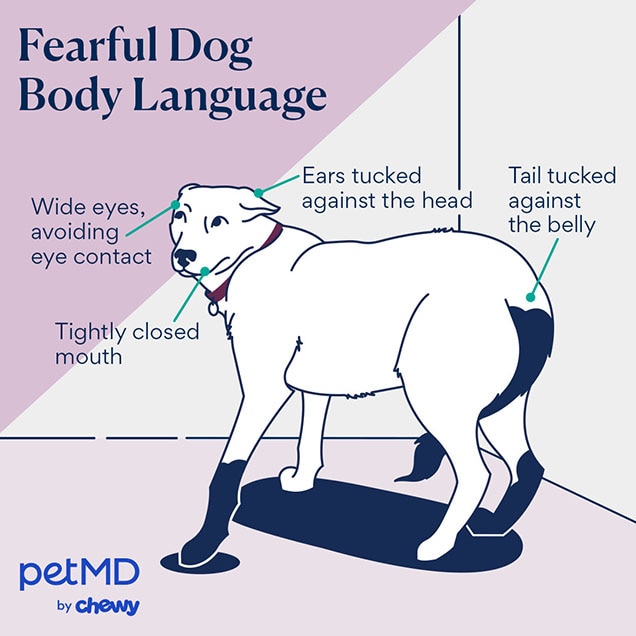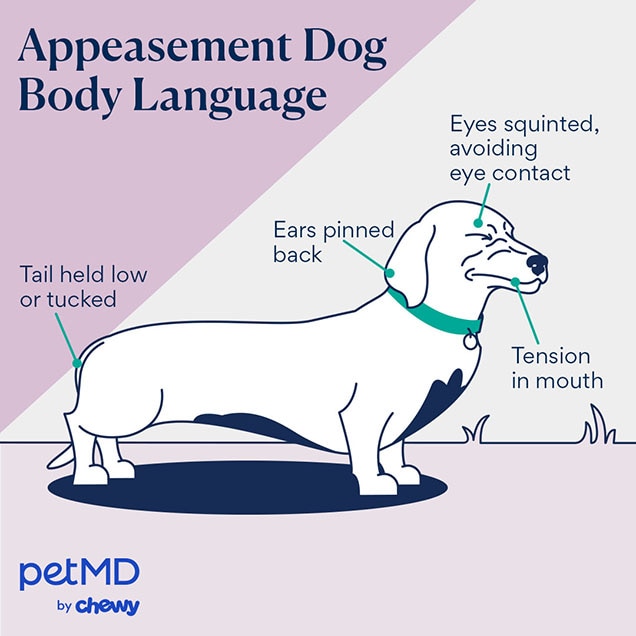How To Read a Dog's Body Language
iStock/MStudioImages
Dogs express their emotions with their body, but we’re not always able to correctly interpret the messages they’re sending. Or worse—we misunderstand their intent, which can make a challenging situation even worse.
Learning to read what your dog is communicating is one of the most important things you can do to strengthen your relationship with them. While every dog will have their own unique nuances to their communication style, most dogs rely on similar postures to convey how they’re feeling.
When reading a dog’s body language, it’s important to note that the dog’s entire body plays a role in signaling; for example, a wagging tail doesn’t necessarily mean that a dog is happy or relaxed, especially if the rest of their body is stiff.
Everything from your dog’s ears and the expression on their face to the placement of their feet and tail works together to help communicate your dog’s emotional state.
Here are some dog body language basics to help you understand what your dog is trying to tell you.
Relaxed Dog Body Language

A relaxed dog is engaged in their surroundings and will have a loose, waggy posture. When dogs show relaxed body language, we tend to see them as being happy.
-
Ears: Held in their natural position; pointed ears will stand straight and floppy ears will hang slightly forward
-
Eyes: Soft, and the forehead is neutral (without wrinkles)
-
Mouth: Either closed without tension around the lips or, if the dog is active, open in a relaxed pant
-
Tail: Wagging in a wide, sweeping motion that’s even with the spine; or, if the dog is engaged in play, wagging slightly higher
The overall body posture of a relaxed dog will be soft and wiggly. Some of the dog’s movements might be overexaggerated, especially during play.
Alert Dog Body Language

An alert dog is assessing his surroundings for more information.
-
Ears: Perked up and pointed forward (look at the base of the ear for floppy-ear breeds)
-
Eyes: Wide open and focused with a neutral, relaxed forehead
-
Mouth: Closed without tension at the lips or around the snout
-
Tail: Extended from the body, even with the spine and possibly wagging slightly
The dog’s overall body posture is distributed evenly between the feet in a “ready” position as they determine their next steps.
Stressed or Nervous Dog Body Language

A dog that’s stressed or uncomfortable will exhibit many of the same postures as a nervous dog. However, they might also perform a series of behaviors called calming signals. These movements are appeasement or displacement behaviors that represent an attempt to self-calm or reduce escalating tension.
Calming signals include:
-
Looking away
-
Turning away
-
Moving in a curve
-
Slow movements
-
Freezing
-
Lip smacking
-
Sniffing the ground
-
Raising one paw
-
Scratching
-
Shaking off (like after getting wet)
Stressed dogs often avoid eye contact or look at the trigger, then quickly look away.
A distressed dog might perform exaggerated yawns, sneeze, or lick their lips frequently. They might also shake their bodies as if their coat is wet, focus on self-grooming, or scratch themselves excessively.
Fearful Dog Body Language

A fearful dog will have stiff body language and might hunch over so their back is curved and their head is close to the ground.
-
Ears: Tucked back against the head
-
Eyes: The dog might turn their head away from a stressor but angle their eyes toward it, causing the whites of their eyes to show (referred to as “whale eyes”).
-
Mouth: The dog might keep their mouth tightly closed with the corners of the mouth pulled back, or they might begin panting without a temperature change or increase in activity.
-
Tail: A fearful dog will tuck their tail so that it’s pressed up against the belly, and they will distribute their weight so that they are shifted back and away from potential triggers.
The dog’s overall body posture is stiff and low, and they might shed more readily when nervous.
Appeasement Dog Body Language

What used to be known as “submissive” behavior is now what we call appeasement body language. With appeasement gestures, the dog tries to appear small and as less of a threat. They might lower their body to the ground, or even flip over on their back to expose their stomach.
-
Ears: Pinned back
-
Eyes: Avoiding eye contact and squinting their eyes
-
Mouth: There will be tension around the mouth, and the dog might pull back their lips to expose their front teeth in an “appeasement grin,” which looks like a smile, but is a way of showing deference. The dog might also lick around their muzzle frequently.
-
Tail: Tucked or held low and moving in a slow, tight wag
The dog might also raise a front paw in an appeasement gesture. Their overall movement is slow, and their weight will be shifted backward to appear less threatening.
Aggressive Dog Body Language

There are 11 different forms of aggression in dogs, ranging from predatory to fear aggression. In general, a dog showing aggressive body language is ready to react to a stressor.
-
Ears: Dogs will hold their ears differently depending on the reason for the aggression. This is a scenario where it’s essential to take a dog’s whole body positioning into account.
-
A fearful dog will typically hold their ears back and against their head
-
An assertive, confident dog will prick their ears forward or to the side
-
-
Eyes: Their gaze will be fixed on the stimulus with a hard, unwavering stare, with wrinkles across the forehead.
-
Mouth: There is tension around the mouth, and the dog might also have wrinkles across the muzzle or a raised upper lip, exposing the teeth.
-
Tail: Again, you will need to take a dog’s whole body into account here.
-
A fearful dog may hold their tail low or tucked before an act of aggression but raise it during the act
-
A confident aggressive dog may hold their tail high above their body, and it will possibly be twitching from side to side in a tight wag
-
Aggressive dog body language is rigid and tense, with minimal movement. The fur might be raised straight up (also called piloerection), particularly across the shoulders and at the base of the spine near the tail. The dog’s weight will be shifted forward in a stiff-legged “ready” stance.
By looking at dog body language as a whole, you can understand what your dog is trying to tell you and act accordingly.
